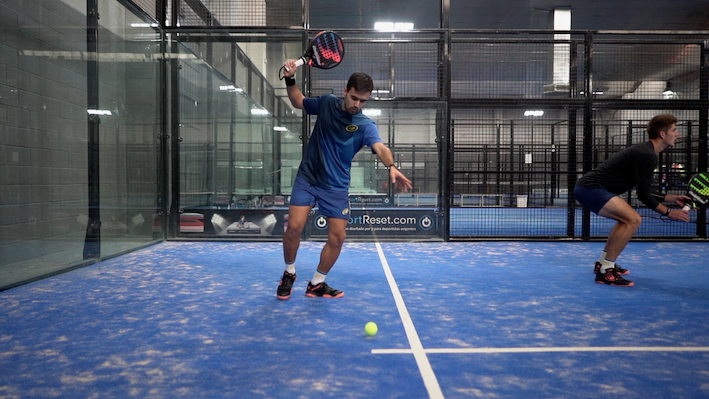The rules of padel
Padel. It’s tennis mixed with squash, may be some badminton and perhaps even a little snooker brain thrown in to understand the angles. And the rules are very specific to the game, so we’ve compiled the key points it will help to know.
All play begins with an underarm serve from the right service court into the opponent’s court diagonally opposite (like tennis).
The server must bounce the ball once behind the service line before hitting it and the ball must be hit at or below waist level.
The server must keep at least one foot on the ground when hitting the serve
The server’s feet must not touch or cross the service line when serving
The serve must land in the opponent’s service box diagonally opposite
If the ball bounces in the service box and hits the glass (side or back) it is a valid serve and must be played by the opposing player.
If the ball hits the net then bounces in the service box and strikes the side or back wall, it is a let and must be replayed.
If the ball lands in the service box and hits the wire fencing it is considered a fault.
If the ball hits the net then lands in the service box and hits the wire fencing, it is considered a fault.
In padel as in tennis, you get a second serve.

What’s in
Players are permitted to play a ball off any of the walls (glass and cage) on their side of the court (apart from return of serve. As above, if the serve clears the net, bounces and hits the cage it is out).
The court lines are only important during the serve. They are not a factor in determining the outcome of points once the serve goes in
What’s out
The opposition wins a point if:
- The ball bounces twice in any area on your side of the court
- The ball hits you or your teammate during play
- The ball hits the wire fencing, posts or any other fixture before going over the net or landing in the opponent’s court (apart from playing a boast off the back wall).
- Once over the net, the ball hits the wire fence or walls before bouncing on the opponent’s side of the court.
Scoring
Scoring is the same as for tennis – so 15, 30, 40 and advantage. Some matches will involve golden points where you reach deuce and the next point wins the game (rather than going to advantage). Golden points are, generally, used to make matches shorter. If playing in a tournament it will be announced at the start that golden points are in play. Otherwise it is up to players to decide if they will be used before the game starts. 🎾
With thanks to iPadel for assisting in compiling this information.





